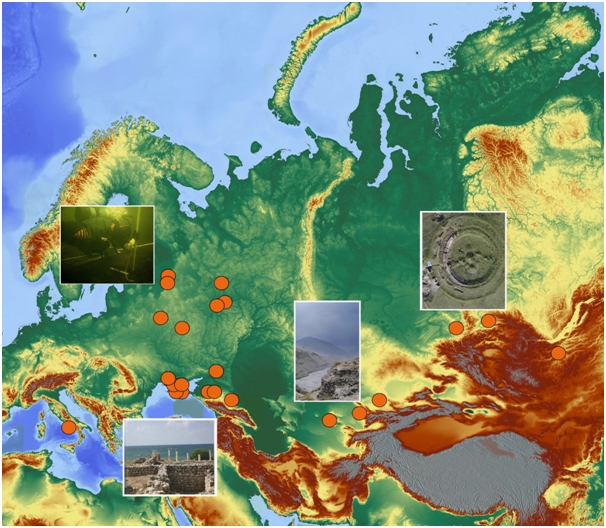by Ekaterina Dolbunova (katjer@mail.ru)
An annual archaeological symposium was conducted from 29-30th November 2016 in The State Hermitage Museum, where the results of excavations conducted during 2016 were presented. Twenty-seven archaeological expeditions exist in The State Hermitage Museum. They are conducting excavations in different regions in Russia – from the North-Western Russia to Siberia and Altai Mountains, including Republic of Crimea and Northern Caucasus, as well as in the Republic of Uzbekistan, Republic of Tajikistan, Republic of Kazakhstan, Kyrgyz Republic, Republic of Belarus, Ukraine and Italy. Additional archaeological excavations are conducted on the territory of The State Hermitage museum itself – in the courts where the remains of old building and artefacts can be found. Not only the territories but also the subjects of these excavations vary – sites from Neolithic to the Middle Ages and XVIIth – XIXth c. are investigated. Some expeditions have existed already for several decades. For example, the Pendjikent expedition has been working for 70 years, and the North-Western expedition for more than 50 years. Furthermore, new expeditions recently developed, and the geographic extent of some excavations has been enlarged.
During the 2016 field season, various discoveries were made which are to be introduced further on into scientific use. A royal Hunnic kurgan was excavated in the Republic of Buryatia with unique finds – remains of chariots and rich funerary gifts – it is one of rare sites of this type known nowadays (excavations of the Central Asian expedition). A cave located in Meshoko area was investigated by the Trans-Kuban expedition, where remains of clay floors of the dwellings, household pits and artefacts attributed to the Maikop culture were found. Today, this is the only such known site of the Bronze Age. Excavations of a unique Neolithic-Bronze Age site at Rakushechny Yar were renewed in the Lower Don area, where the well-preserved 7th mill. BC cultural layers were uncovered (Low Don expedition). Underwater and peat-bog excavations of pile-dwelling at Serteya II were continued in the Dnepr-Dvina area (North-Western expedition). These are among the numerous discoveries which were made by expeditions of The State Hermitage Museum in 2016.
It is important to note that archaeology is one of the main directions of work of the State Hermitage Museum. Archaeological discoveries of the Hermitage museum include rich Scythian kurgans, frescos of Panjakent and Nymphaion, Urartu antiquities, research on Old Russian and Saint-Petersburg architecture, medieval Russian towns, Russian tsars’ quarters, burial mounds and settlements in Northern Caucasus, Xiongnu burials in Buriatia, and Iron Age settlements. The Hermitage was one of the pioneers of underwater archaeology, beginning in the 1980s in the Soviet Union, and continuing to conduct underwater excavations of unique Neolithic pile dwellings sites in North-Western Russia. “The net of the Hermitage expeditions became one of the major factors of maintenance of a common cultural space” in Eurasia. Exhibitions, made on the basis of unique archaeological finds, allow the preservation of the extent of the cultural milieu.
More information about archaeology in The State Hermitage Museum can be found in Экспедиции. Археология в Эрмитаже. СПб, 2014. 360 с. (Expeditions. Archaeology in The State Hermitage Museum. SPb, 2014. 360 p.)

Geography of archaeological expeditions of The State Hermitage Museum (after Expeditions...,2014 modified)
Go back to top